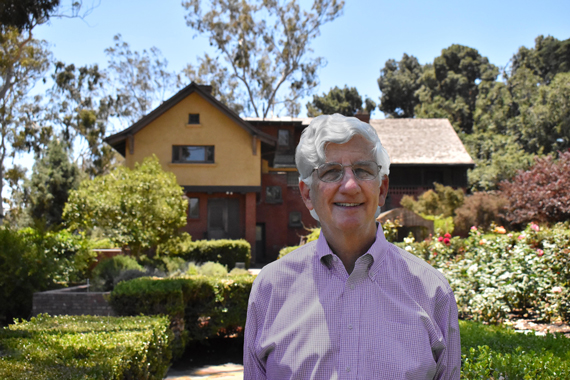|
SOHO President's Message
By David W. Goldberg
March/April 2022
 Photo by Marlena Krcelich |
You’ve heard me say preservation was simpler and more clearcut when I joined SOHO in 1979, when it was 10 years old. Our emphasis was on saving late 19th-century Victorians, which were being lost at an accelerating rate. Alarm bells typically sounded when time was short and options limited for our impassioned, all-volunteer brigade. SOHO’s approaches to save threatened structures could be innovative and entertaining, such as novel architecture tours, and catnip to local media. It was exciting, fun, and a great way to meet wonderful and interesting people while making a difference. Most importantly, with SOHO’s rising prominence, the need to preserve our diverse, multicultural architectural heritage was beginning to penetrate the public consciousness. It was a start.
Since then, the body of knowledge encompassing preservation has grown exponentially and in ways few of us could have envisioned. SOHO intuitively saved the modest Senlis Cottage (1896) in Heritage County Park, a decision that was unique in the movement’s early years. Today, preservation addresses all socio-economic and demographic groups and better reflects society as a whole. Issues and concerns increasingly are identified early in the development permitting process—the City of San Diego’s 45 years old or older building review being a good example—making it easier to find solutions acceptable to a broad group of stakeholders.
Preservation has also come to play an important role in addressing a wide range of societal concerns. Examples include the revitalization of declining neighborhoods; a pathway to affordable housing, which helps individuals build economic security for themselves and their families; job creation; and the generation of ongoing economic activity.
Another big change from the early days has been the periodic alignment and “mutual coexistence” with policies devoid of preservation underpinnings. An example is what’s being called “deconstruction,” or “the process of dismantling a building or structure down to the individual components and/or construction materials in a method that maintains [their] integrity for reuse in other projects.” As a term, “deconstruction” is somewhat misleading, as it doesn’t clearly state that recycling building materials is the goal.
I first learned about deconstruction several years ago when visiting my sister and brother-in-law—both good preservationists—in Portland, Oregon, the first city in the country to require deconstruction of single-family homes in lieu of demolition. Since then, other cities have implemented similar programs.
My initial reaction was not a big thumbs-up. Frankly, it sounded like a back-door way to greenlight the destruction of historic buildings and neighborhoods. However, the more I learned about deconstruction the more it made sense—in some cases of last resort. The fact is that not all historic and older buildings will be saved and, when demolition—or destruction—occurs, dumping many tons of rubble in a landfill is the worst possible option.
“Historic preservation is the ultimate recycling strategy,” preservationist and economist Donovan Rypkema wrote long before deconstruction was invented. Today, construction and demolition waste accounts for up to 40% of total landfill. This is unsustainable. Clearly, reusing and recycling are better alternatives.
Architectural salvage resulting from deconstruction can be used to help preserve historic structures and extend the life of existing buildings. But at its core, deconstruction is salvage and NOT an alternate form of preservation. It should be limited to resources with minimal historic significance or where integrity has been severely compromised. In other instances, especially when all preservation efforts have failed, it’s the lesser of evils.
Finally, on a happy note, Carol Lindemulder’s book, Color & Contrast, A Book for Everyone, is now available for sale with distribution by Amazon and Barnes & Noble. An accomplished landscape painter, Carol was one of SOHO’s founding members, media whisperer, People In Preservation Lifetime Achievement award winner in 2009, and a two-time president. Be sure to check it out.
As spring approaches, I look forward to seeing everyone as we enjoy our beautiful and historic city together. All the best!
|
2025
2024
2023
2022
2021
2020
2019
2018
2017
2016
2015
|




